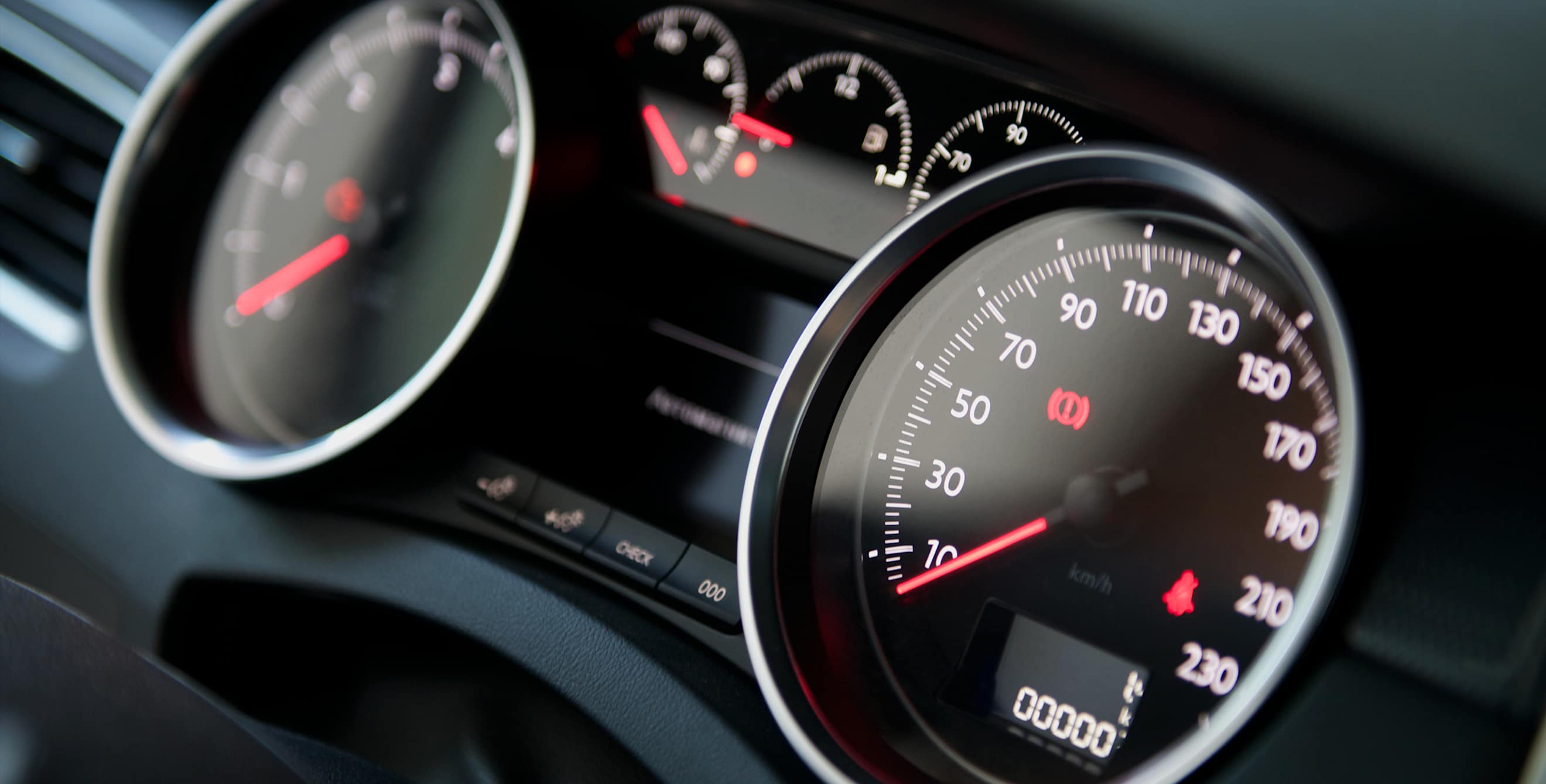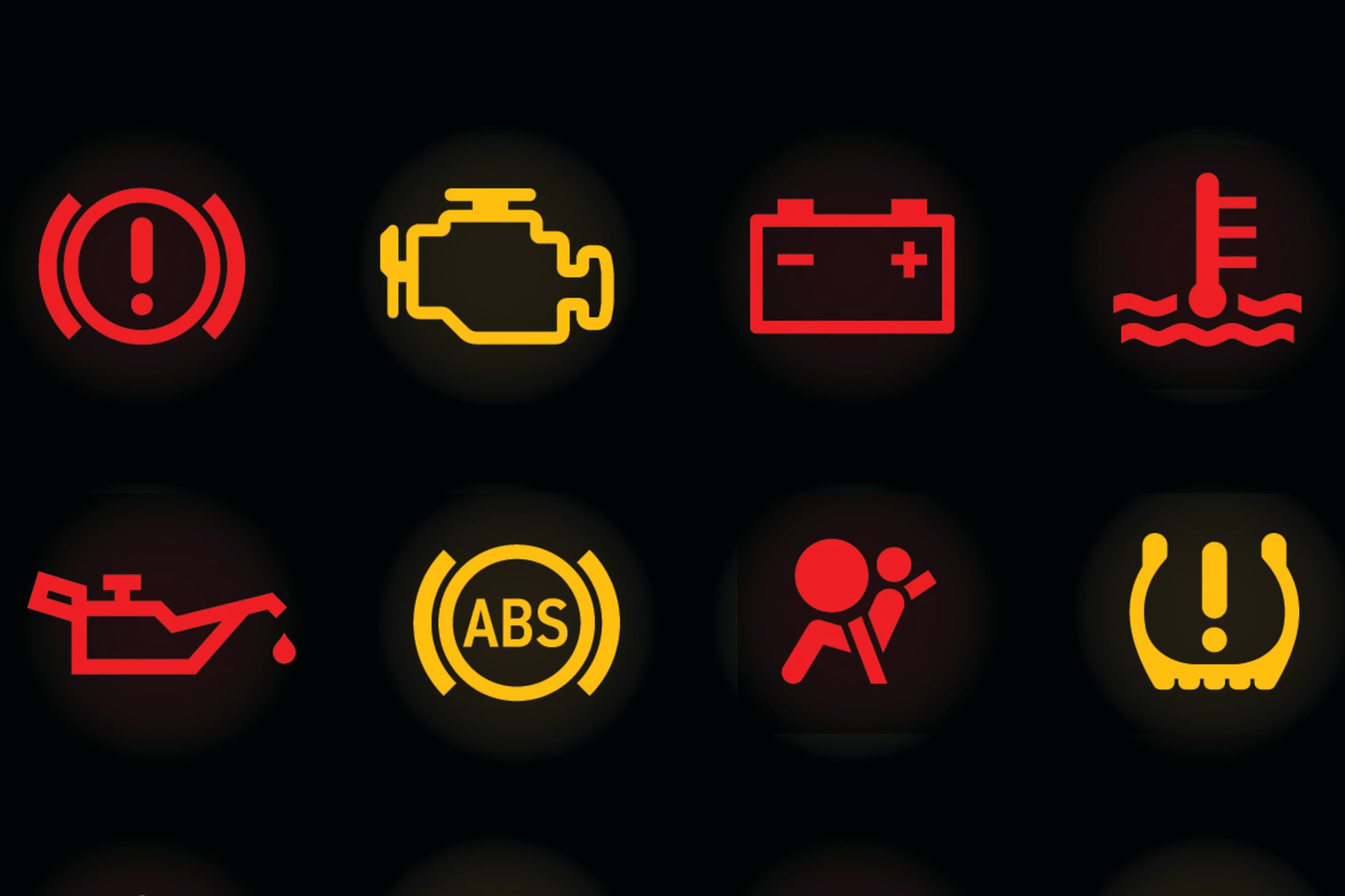
What Do Check Engine and Other Car Warning Lights Mean?
What is that ominous red symbol trying to tell you—and what should you do about it?

Your car has a variety of gauges and warning lights to help you monitor what's going on, mechanically and electrically, as you drive. Gauges communicate in an unambiguous way, but when a warning light blinks on, it isn't always easy to decipher exactly what it's trying to get across.
All the warning lights should come on for a few seconds when you start the car. This reassures you that the bulbs still work. But when one stays on longer or starts to glow as you drive, it's trying to tell you something. Here's a rundown of dashboard warning lights and what they mean.
Oil Pressure Warning Light
Cars that are not pure electric vehicles often have two warning lights dealing with oil. The oil pressure light is the one that requires immediate action. Pull over and turn the engine off.
If engine oil pressure is low, excessive, rapid wear can result. The cause may simply be insufficient oil. You can check this with the dipstick and, if necessary, add oil—it will probably take two or three quarts to reach operating level. It might take a quart or two just to reach the end of the dipstick. If the oil level is not low, or if the warning light returns for more than a couple of seconds when you restart the car after adding oil, turn the engine off again and call for a tow.
Oil Service Light
Your car's computer is suggesting that you get the oil changed.
Smart Tip: When it’s time for an oil change, look for a AAA-Owned or AAA-Approved Auto Repair Center near you.

Temperature Warning Light
Many cars have a dashboard temperature gauge and a warning light. The ominous march of the needle toward the red zone can warn you about impending overheating in time for you to head it off.
If you see the temperature gauge creeping toward the red zone, try turning off the air-conditioning and turning on the heater. The AC is an added burden for the engine, possibly causing it to run hotter. The heater acts as an auxiliary radiator for the engine, allowing coolant to do its job more efficiently. But once the light comes on, trouble has arrived; you should pull over, turn off the engine, and let it cool.
When the engine's hot, don't try to remove the radiator cap. Doing so can result in a spray of superheated coolant.
Brake Warning Light
This might only mean you've left the parking brake on. Or the trouble might be more serious, such as brake failure or insufficient brake fluid. Have a technician diagnose the situation.
ABS Light
Vehicles with antilock brakes have a separate light to let you know when there is a problem with the antilock system. This doesn't necessarily mean the brakes won't work, but it is likely that the antilock feature has a problem. Have a technician inspect the system.
Car Charging System Light
This indicates the battery isn't being charged. Causes can range from the expensive, such as a faulty alternator, to the cheap, such as a slipping belt. Take the car to a repair facility immediately.
Check Engine Light
Technically this is the malfunction indicator lamp, but it is usually labeled Check Engine or something similar. It indicates a problem with the systems that control engine functions. In some cars, it also monitors the transmission.
Usually the situation isn't verging on catastrophe, as the problems that activate the oil pressure or temperature lights can be. But you never know. Look at the gauges for a clue to what's wrong, and be especially alert to the way your car is running. If you determine that the problem means imminent trouble, pull over and call for a tow. Otherwise, take your car to a repair facility for diagnosis.
Airbag Malfunction or SRS Light
Not to be confused with the lights that let you know if the passenger side airbag is on or off, this light indicates that a sensor has detected a problem with the airbag system. When it comes on, have the air bag system inspected.
Save 10% on labor, up to $75, and get an extended warranty on parts and labor.*